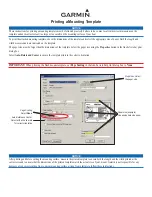
Section 10 - AIS functionality
CAUTION
Valid GPS data must be entered into this radio before the AIS functions can be used. The
plotter PPI function will not display targets accurately with incorrect GPS data.
10-1 About AIS
The marine Automatic Identification System (AIS) is a location and vessel information
reporting system. It allows vessels equipped with AIS to automatically and dynamically share
and regularly update their position, speed, course and other information such as vessel
identity with similarly equipped vessels. Position is derived from the Global Positioning
System (GPS) and communication between vessels is by Very High Frequency (VHF) digital
transmissions.
There are a number of types of AIS device as follows:
•
Class A transceivers. These are similar to class B transceivers, but they are designed to be
fitted on large vessels such as cargo ships and large passenger vessels. Class A transceivers
transmit at a higher VHF signal power than class B transceivers and therefore can be
received by more distant vessels, and also transmit more frequently. Class A transceivers
are mandatory on all vessels over 300 gross tonnes on international voyages and certain
types of passenger vessels under the SOLAS regulations.
•
Class B transceivers. Similar to class A transceivers in many ways, but are normally lower
cost due to the less stringent performance requirements. Class B transceivers transmit at
a lower power and at a lower reporting rate than class A transceivers.
•
AIS base stations. AIS base stations are used by Vessel Traffic Systems to monitor and control
the transmissions of AIS transceivers.
•
Aids to Navigation (AtoN) transceivers. AtoNs are transceivers mounted on buoys or other
hazards to shipping which transmit details of their location to the surrounding vessels.
•
AIS receivers. AIS receivers will generally receive transmissions from class A transceivers,
class B transceivers, AtoNs and AIS base stations but do not transmit any information about
the vessel on which they are installed.
This radio contains an AIS receiver only function.
10-2 AIS - Static and dynamic information
Defined transmit rates for Class A vessels shown below are provided for reference purposes
only. The frequency of messages received will vary due to a number of factors including but
not limited to such factors as antenna height, gain and signal interference.
•
Static information is either broadcast every 6 minutes, when data has been amended, or
upon request.
B&G - V50 & H50 Operation Instructions
62
Содержание H50 Handset
Страница 1: ...bandg com ENGLISH V50VHF H50Handset User Guide...
Страница 91: ......
Страница 92: ...1177 988 10507 001...
















































